Conserving A 1920s House Of Worth Gown
This guest blog post was kindly written by Annika Cilke.
Annika Cilke is an independent textile conservator based in Oslo, Norway. She holds an MPhil in Textile Conservation from the University of Glasgow and works with both private and public collections. She can be found at cilkekonservering.no.
Few garments carry quite the same aura of theatrical glamour as a creation by the House of Worth. Recently, I had the privilege of conserving a gown destined to join the Underpinnings Museum’s latest exhibition, which explores the dazzling world of Erté’s costume designs. This particular project required careful stabilisation to ensure the gown could once again take to the stage—an echo of its original life as a gala gown. In an age where sequins, feathers, and a certain sense of spectacle are enjoying renewed cultural attention, it feels especially fitting to bring such a piece back into the spotlight.
This treatment aimed to stabilise the garment, enabling it to be clothed on a mannequin and photographed. The dress was structurally in poor condition, especially the shoulder straps where the connecting seams had broken and were beginning to split.
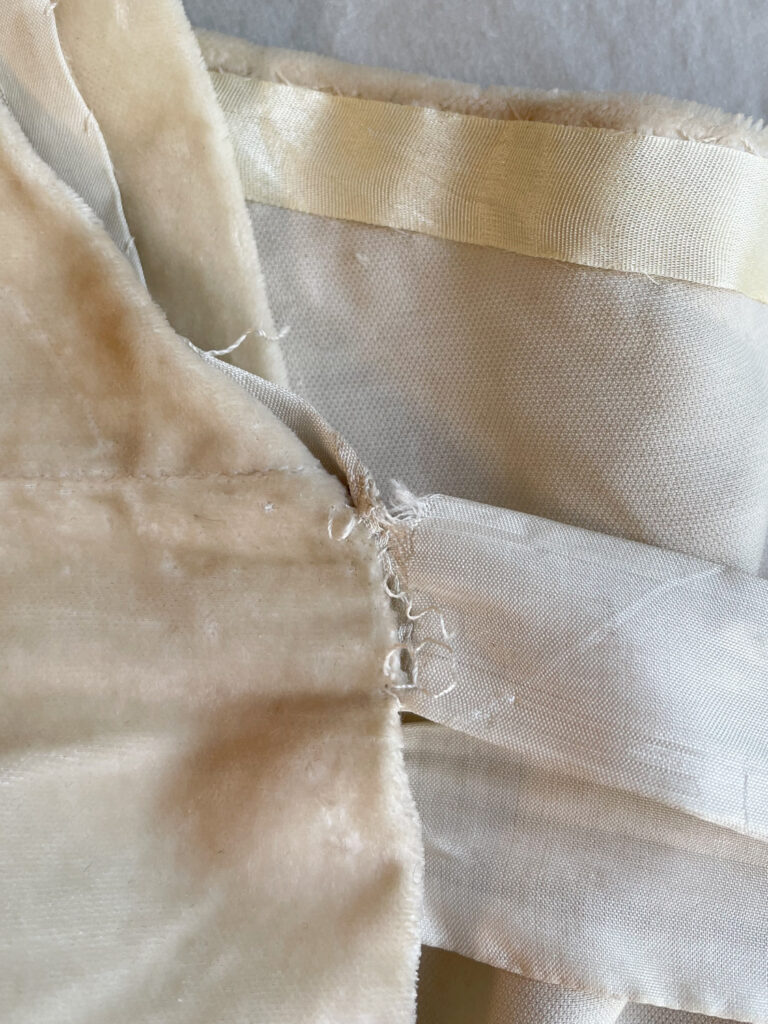
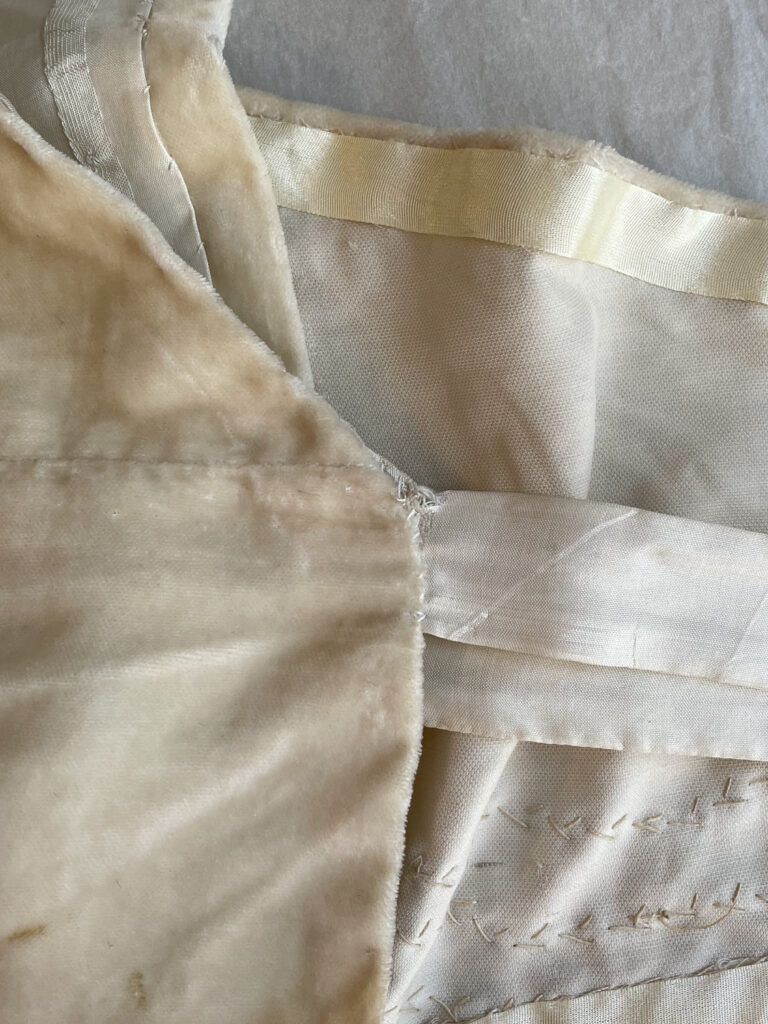
The loosened seams were tightened and secured where there was original thread of sufficient length. Seams where the thread was missing were sewn anew, using original stitch holes where possible. This involves an amount of detective work and reverse engineering and is immensely satisfying to find the correct orientations and re-create the construction.
Many of the construction elements along with turned back edges were originally covered with a silk ribbon, which had degraded significantly. In many areas the ribbon was reduced to only the selvedge with loose threads hanging. The ribbon served an aesthetic function, raising the dress’ standard of finish rather than contributing to the strength of the seams. In its degraded form however, there was a risk of the loose threads catching on other elements during handling and mounting, so it was decided to stabilise these as well.
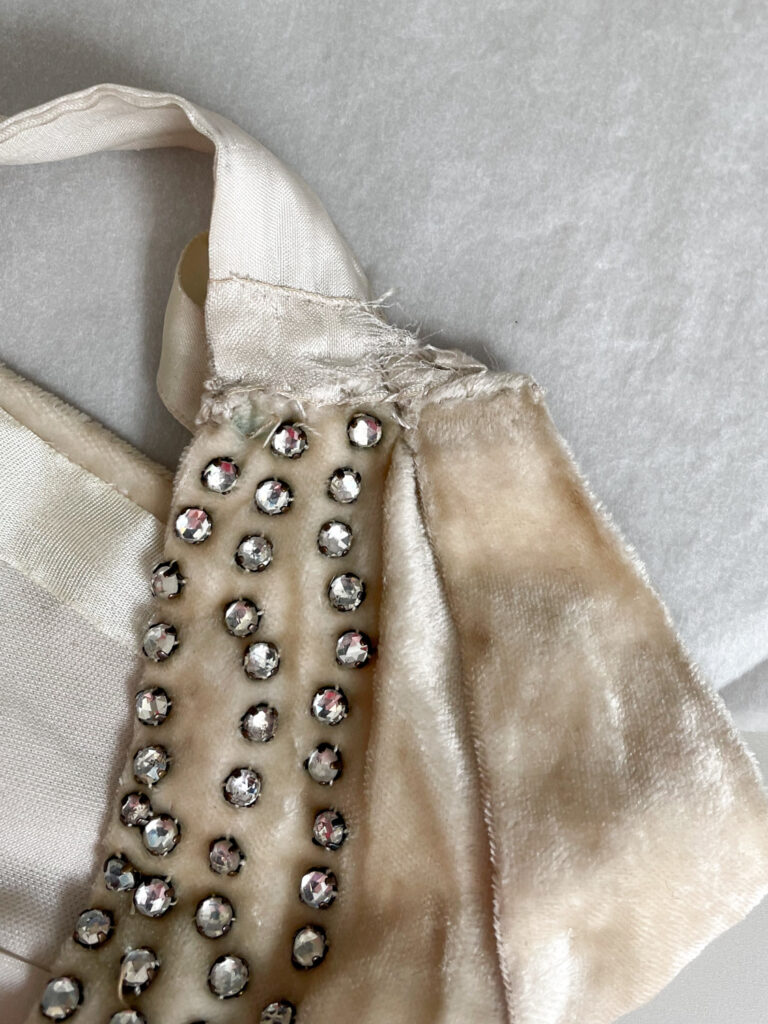
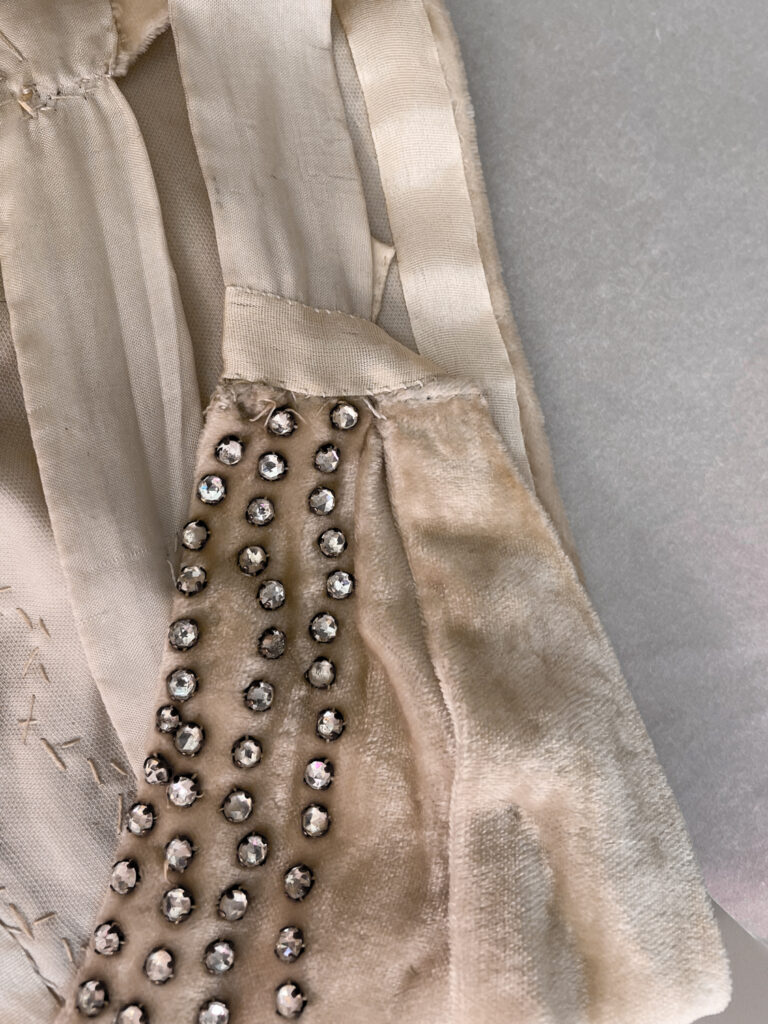
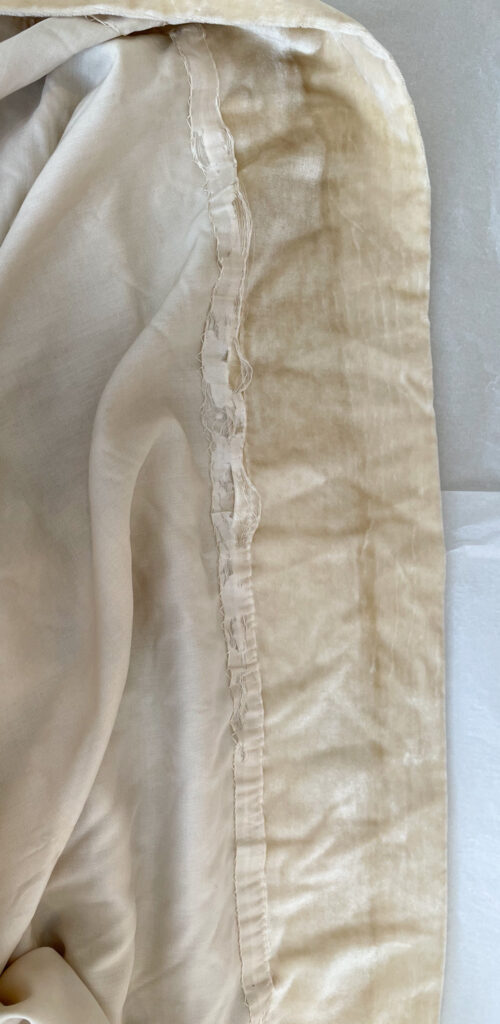
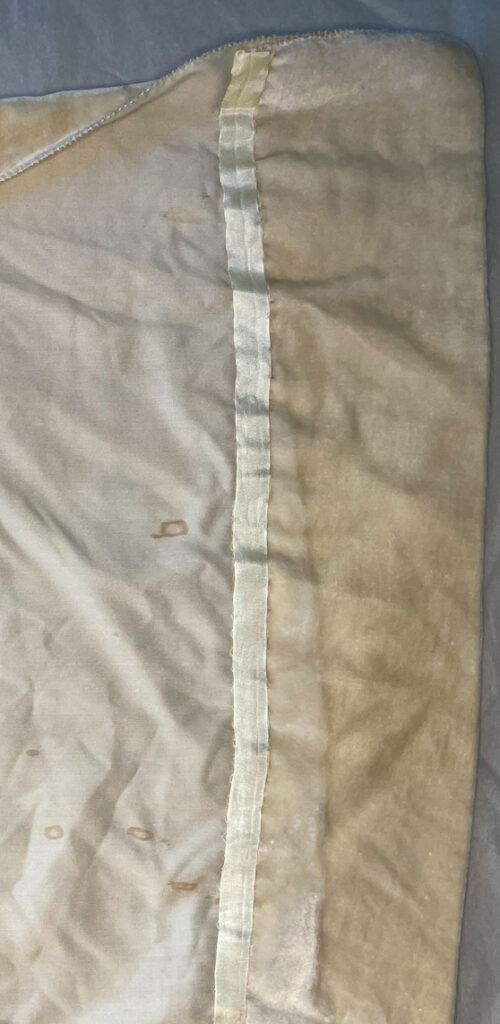
New silk ribbon in the same width and a sympathetic colour was chosen to be sewn over the original, encasing it and protecting it from further mechanical damage or degradation.
With these interventions complete, the gown is once again stable enough to be safely displayed and appreciated. While the treatment was deliberately minimal, aimed at preservation rather than restoration, it allows the craftsmanship of the House of Worth to shine through without distraction. Preparing such a fragile object for exhibition is always a balance between conservation ethics and curatorial vision, and in this case it has been a privilege to support the Underpinnings Museum in bringing this remarkable garment to a new audience. As the gown takes its place alongside Erté’s exuberant designs—and at a moment when popular culture is turning its eye once more to sequins, feathers, and showgirl splendour—it feels especially rewarding to see historic costume step confidently back into the spotlight.
